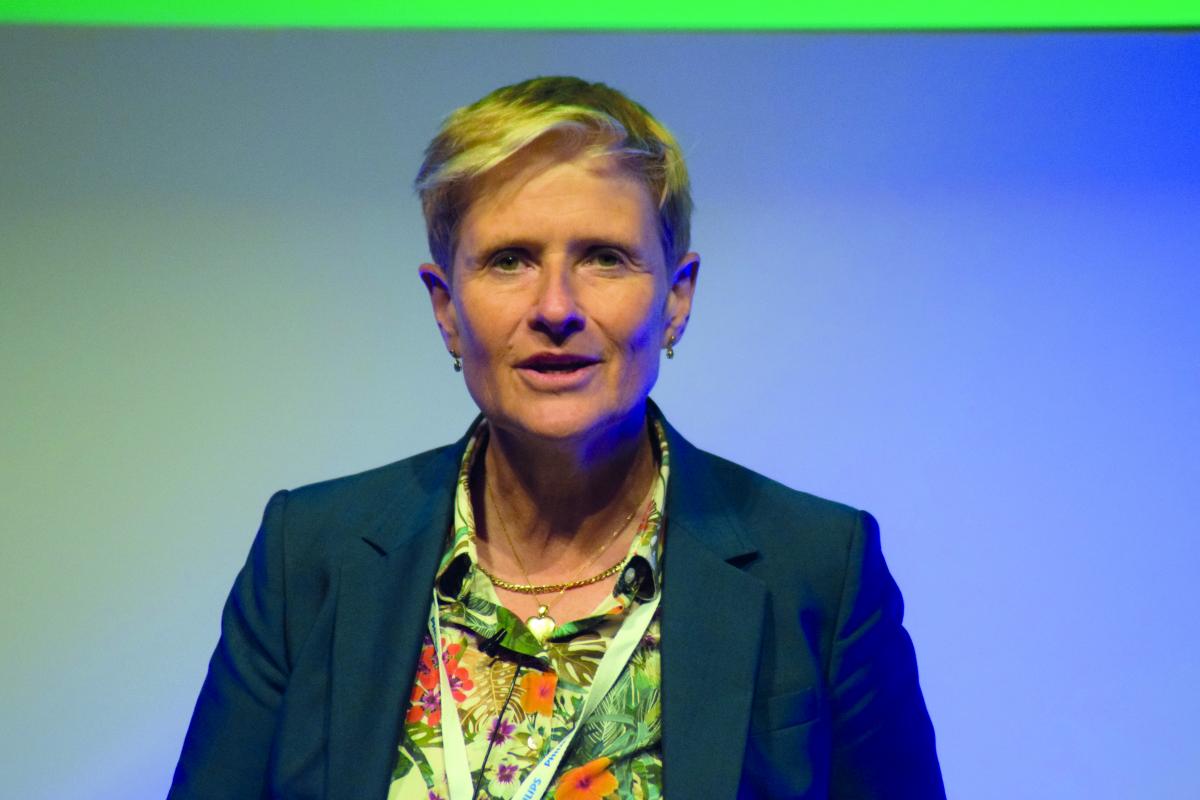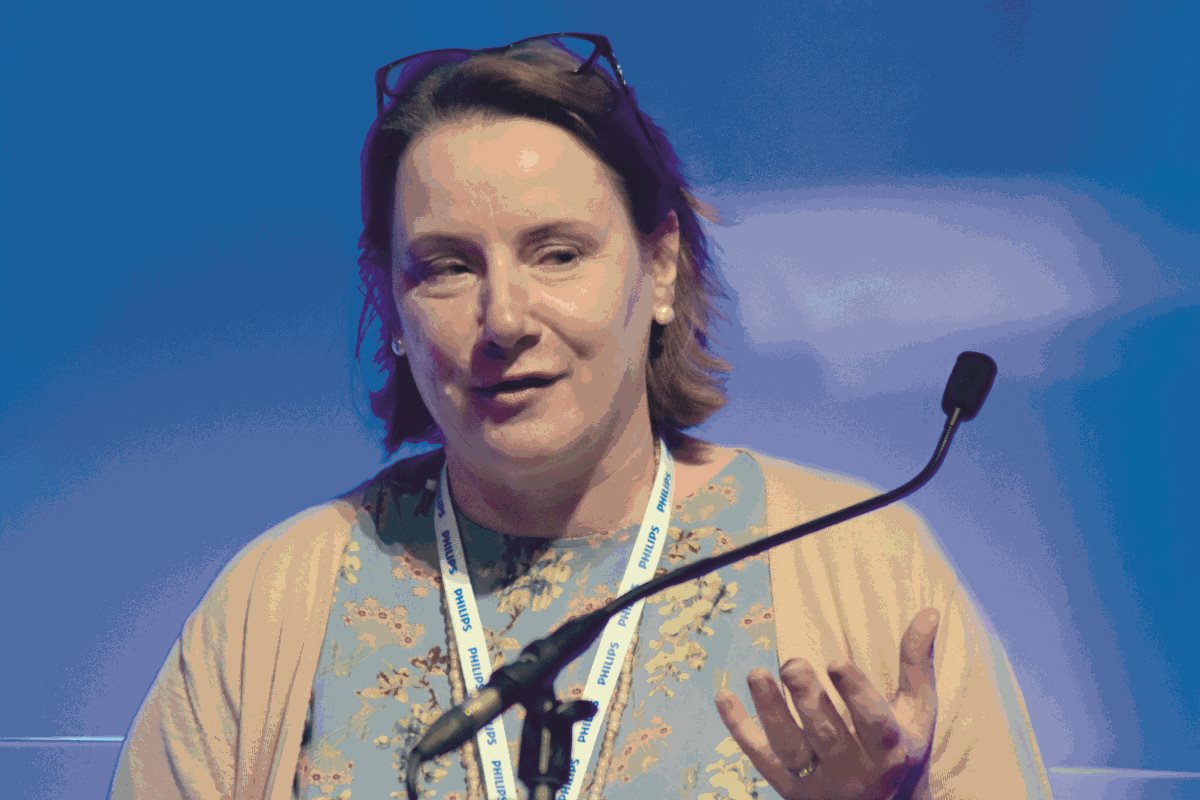Dr Katherine Halliday, Clinical Lead, Imaging & Radiology workstream Getting it Right First Time (GIRFT) programme and Fiona Thow (seen right), Head of Imaging Services, NHSI National Imaging Optimisation Delivery Board, detailed some of the initiatives that have been undertaken as part of improving service delivery in departments across the country.
“My brief,” said Fiona, has been to visualise what imaging services will look like in the future and trying to explain the unwarranted variation in the system – to find out why one area is able to do something when another cannot, and devise a targeted operating model based on the data collected from different trusts.”
 Working with a number of organisations and professionals, including EMRAD, the RCR, SCoR, HEE, IPEM, NHS England, CQC, AXREM and regional trusts, the board has been analysing good practice to develop a development programme to pull everyone together in improvement.
Working with a number of organisations and professionals, including EMRAD, the RCR, SCoR, HEE, IPEM, NHS England, CQC, AXREM and regional trusts, the board has been analysing good practice to develop a development programme to pull everyone together in improvement.
“We have had a great response and many expressions of interest, and have tried to get input from everyone we can to unpick variations and understand what is going on regionally.
“We are all here to make things better for our patients and our staff but first we need to better understand where we’re starting from,” said Fiona.
Katherine followed on: “Improved care will benefit patients and staff, as well as save money.”
Key points
- Litigation – are we sharing learning?
- Unwarranted clinical variation
- Evidence-based data needed
- Concentrate on quality and resource, and savings will follow
A GIRFT team will be visiting a number of sites over the next few months to discuss variation and find out about best practice, and then this will be reported and shared across all sites.
“There is a huge variation in how we manage insourcing and outsourcing, workload and staffing, equipment age and specifications, training, patient handling and so on. We need more data.”
“The reality is that demand is going up and up. We need to how to make the best use of imaging and try to match the volume of imaging done to positive patient outcomes.”
